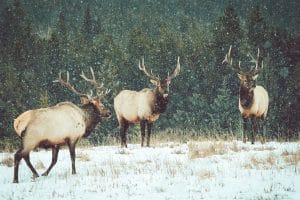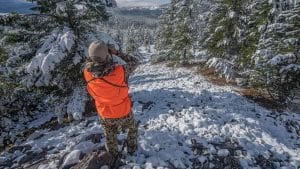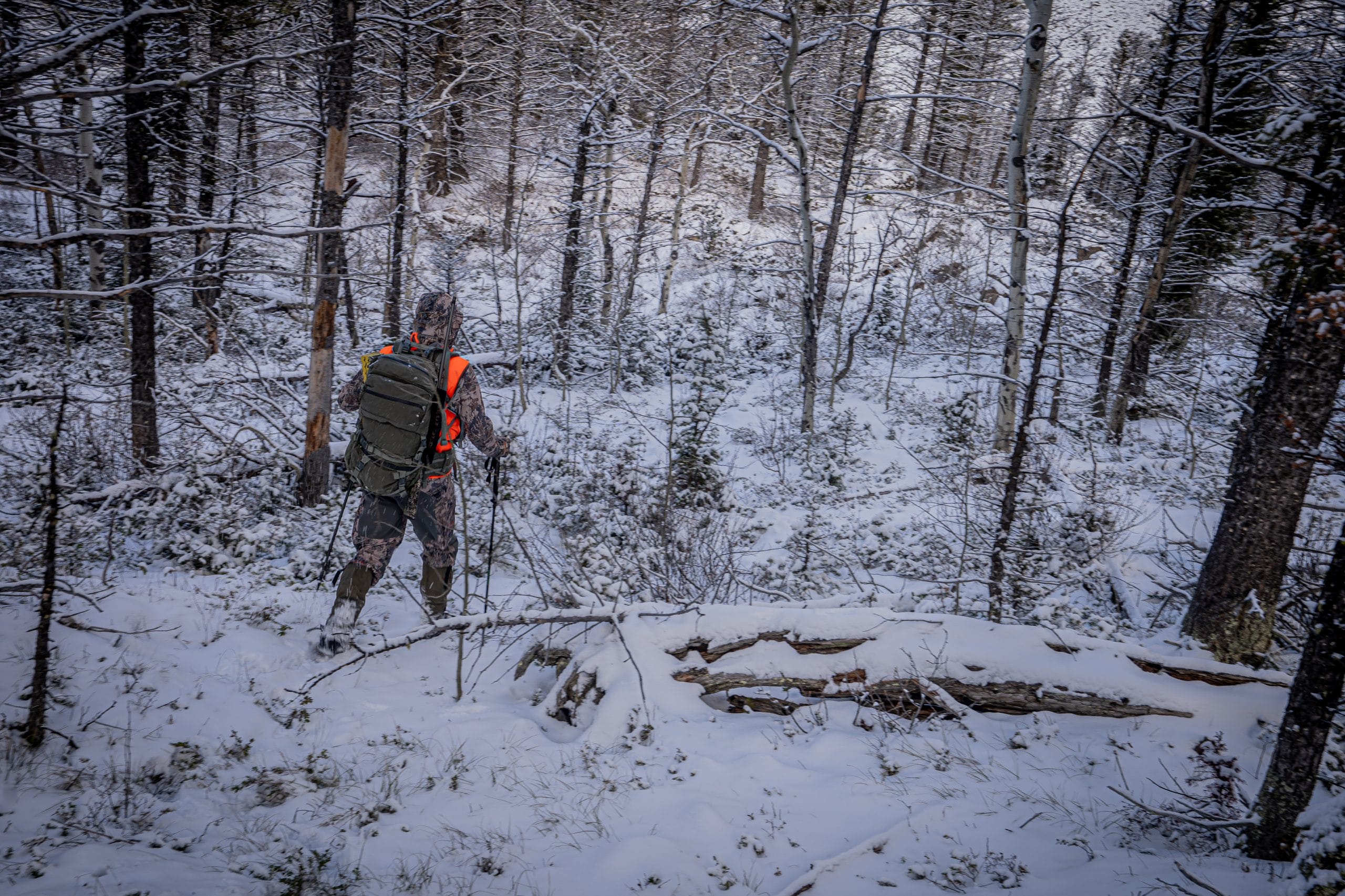Elk can be broken down into five time periods. During each of these periods, Elk have distinct needs: food, water, security and breeding. As the hunting season progresses, these needs will change in priority, and these needs will dictate where you find the elk.
Here are the Five Periods of Elk;
3. Peak rut (Mid-September and into Early October)
4. Post-rut (Mid to late October)
5. Late Season (November and Beyond)

If you want more info like this, check out our e-guide
Elk have 4 primary needs, food, water, sanctuary, and breeding. These needs fluctuate with every season.
You probably already understand what is meant by food, water and breeding as a primary need. But here’s a quick explanation of sanctuaries. These are places, due to topography, distance, and/or blowdown, hunters just don’t want to go. BUT, that’s where the elk are going to be because they know you’re not going to go there. Sanctuaries are places far away from open roads. At the same time, a sanctuary can be a ranch that doesn’t allow hunting. And once rifle season starts, these are likely places elk are going to run.
Late Season
The Late Season calendar period is basically early November and beyond. Bulls will be acting very similar to the way they are in the Post-Rut; however, at this point, they go from being solo to forming bachelor groups, which can consist of two to eight bulls. This is where bulls adopt that old adage of safety in numbers.

They’re going to bed in close proximity of each other, eat near each other and stay in sanctuaries with each other – and stay as far away from hunting pressure as they can. Bulls don’t move very much in this time period. Most bulls will find bedding areas where they can feed just 300 or 400 yards away from their bed.
Bad weather and oncoming winter will be factors during this period. Poor road conditions may inhibit access or at least slow you down and you have to be conscious about the layers you’re wearing and packing.
Oncoming winter will force bulls to stay out later in the morning and come out earlier in the afternoon in order for them to maintain an appropriate caloric intake to survive the next few months. Elk might even drift out of sanctuary areas to look for snow-free forage as well, so it pays to glass from a high vantage point. This may be your secret weapon so keep this in mind when hunting late season bulls.
Last note on late season hunting, make sure that you are prepared and ready for the unexpected when traveling into the backcountry.

The needs of bull elk during this Late Season period is another simple order of priority:








